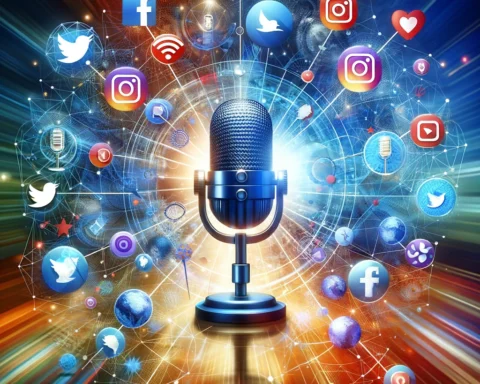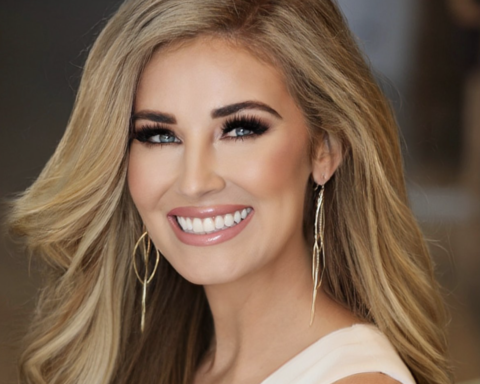The year 2020 has been a masterclass in alarmist headlines. “Is the Age Of Celebrity Over?” BBC. “Is This the End Of Influencing?” Vanity Fair. “Brands Aren’t Social Distancing from Social Media, They’re Boycotting!” Forbes. While the media indulged in disastrous scenarios, the actual influencer market continued to grow despite (and due to) the impact of the coronavirus on workplace and lifestyle habits and practices worldwide. As more people spend more time indoors at home and physically away from their colleagues and friends, social media sites and apps are experiencing double digit growth in usage. With over 70% of American adults holding one or more social media accounts, it is no surprise that nearly half the consumers cite influencer input as a welcome part of their purchasing decision-making. Even by conservative estimates, Instagram alone will account for over $2.5 billion in influencer spending, doubling in two years. So, is it game over or green light for the youngest sector of the media economy? To sort through hype, buzz, and data, I met with Eric Dahan, co-founder and CEO of Open Influence. A recipient of the “30 Under 30” citations from Forbes, Inc’s and other creative leadership rankings, he is an industry insider with a 360-perspective on the State of Influence today.

Why has influencer marketing become the fastest growing segment in digital media?
I think influencer marketing is a byproduct of a much bigger historical trend. As internet access proliferates, more people can create and share content easily. We live in an interconnected world with constantly circulating information. As a result, people try to determine how much attention they should give anything, how much should they trust anyone. Social validation plays a crucial role in that. If we’re shopping online, we’re looking at reviews. If we’re trying to pick a restaurant, we’re looking at reviews. We see this deep human principle reflected in how various algorithms work, too. Programmatic means of reaching an audience are just not effective anymore to break through all the noise. Influencer marketing is rising in value, because social is permeating every element of our information landscape.
How has the COVID-19 pandemic changed our information landscape?
The world has embraced digital. Colleagues and I discussed a recent McKinsey & Company report on e-commerce adoption jumping a decade-worth in engagement in the first three months of the pandemic. Social media was already on the rise. E-commerce was on the rise. They called it The Quickening. Now we see social commerce functionality upgraded almost daily. The pandemic has solidified the foundation for influencer marketing to accelerate and strengthen. People’s lives changed, as well as their priorities and concerns. Influencers are experiencing the same stress. Seeing any ad pop-up while you are browsing for vital news is likely to turn you off. Maybe now is not the best moment for sale pitches. We all need emotional intelligence and empathy to navigate this difficult time. Influencer marketing gives brands an opportunity to maintain a real connection with consumers. In business terms, it is about holding and honoring the space between discovery and conversion in the customer journey.

What makes influencers relatable to people now?
In one word: trust. If you need legal advice, you seek out a specialist in that area of law. When you need styling tips later, you won’t be asking that same lawyer if they’ve heard of any fashion trends. What determines degrees of trust is the rate of repeat engagement. If more people are queuing at a restaurant, the food is probably good. Trust is aggregated. At the same time, real influencers are not always people with the largest followings. When we worked with non-profit organizations on voter mobilization during the presidential election, we found the most responsive audiences with already somewhat politically active influencers who had been talking about social justice before. They were ready for engagement.
What mistakes can brands make in launching influencer marketing?
Influencer marketing is like throwing gasoline on the fire. Yet, you’ve got to have the fire going first. Brands must be well past that proof of concept phase and understand their value proposition. Otherwise, we’re testing too many variables at once. On social media, you are working with others to deliver your message. If you are not clear what it is, it might backfire in someone else’s voice. Especially, when brands underestimate the importance of finding the right person for their mission. Don’t serve half-baked cookies. Get your ducks in a row. And other such metaphors.

What is the biggest misconception among brands about influencer marketing?
Too many brands underestimate how much work goes into a successful partnership. Sometimes teams come in with briefs created for entirely different marketing channels and they try to shoehorn it on the influencers. Some clients allow personal bias to interfere with business decisions. For example, if they opt for an influencer who they personally follow despite the data we run to evaluate match-ability for the target audience. This also happens when they just want to maximize “reach” through certain accounts without understanding that content quality and brand message continuity are crucial. Then they can be overly prescriptive, too. This doesn’t leave room for influencers to really shine as content creators. You shouldn’t micromanage the creative process. On the other hand, you cannot just gift an influencer some items and hope for the best! It is still a steep learning curve for many.
What is your number one practical advice for brands engaging with influencers?
Trust the process more. Brands can take a really long time to approve everything: the influencer, all the details of what, when, how, etc. It can take a lot of back and forth with multiple pivots along the way. Those pivots not only cost time and money, but they can also make the entire interaction meaningless for the audience by the time everyone is on board and “happy” with it. The more the brands can align and communicate their vision beforehand, the more efficient process can be and more effective the outcome. Let go and let influencers do what they know best!
How do you see the role of influencer marketing post-pandemic?
Influencer marketing is at its first-generation stage. It is poised for an ever-bigger share of direct response marketing in the future. Why is Walmart interested in TikTok? It’s not consolidation, it’s conversion of social power. Same reason there is investment in Amazon Live or why Disney+ is promoting its Group Watch feature. Brands recognize the amount of social capital that has been created and try to capitalize on that. Democratization and fragmentation of the internet makes the role of socialization much more important. As long as you have people creating and sharing content, there will be influencers. Just naturally. There will be new platforms, new markets, new horizons. Just think, there was a time not so long ago when people questioned whether personal computers could ever be commercially successful. How much computing could one need to do? Now we carry powerful processors in our back pockets as “phones”. Mediums change, information continues to circulate.





